Strolling along the main avenue named after the Çengelköy district by the Bosphorus, there stands a most unusual historical monument for eyes that look for the out of the ordinary. It is very close to the historical café (Çengelköy Çınaraltı Kahvesi) by the water. As the name implies in Turkish, the café is under an old plane tree where you can have breakfast or just sip your Turkish coffee or tea and enjoy the view of the Bosphorus. You can encounter similar cafés with exactly the same name (Çınaraltı Kahvesi) in almost all of the districts along the Bosphorus. Only the preceding name will differ depending on the specific district you are in. They can be pretty crowded during weekends with long queues for a table. Weekdays are preferable to avoid the ordeal. If you cannot be accommodated, the nearby (only 3 minutes away) Sütiş Çengelköy is also an alternative.
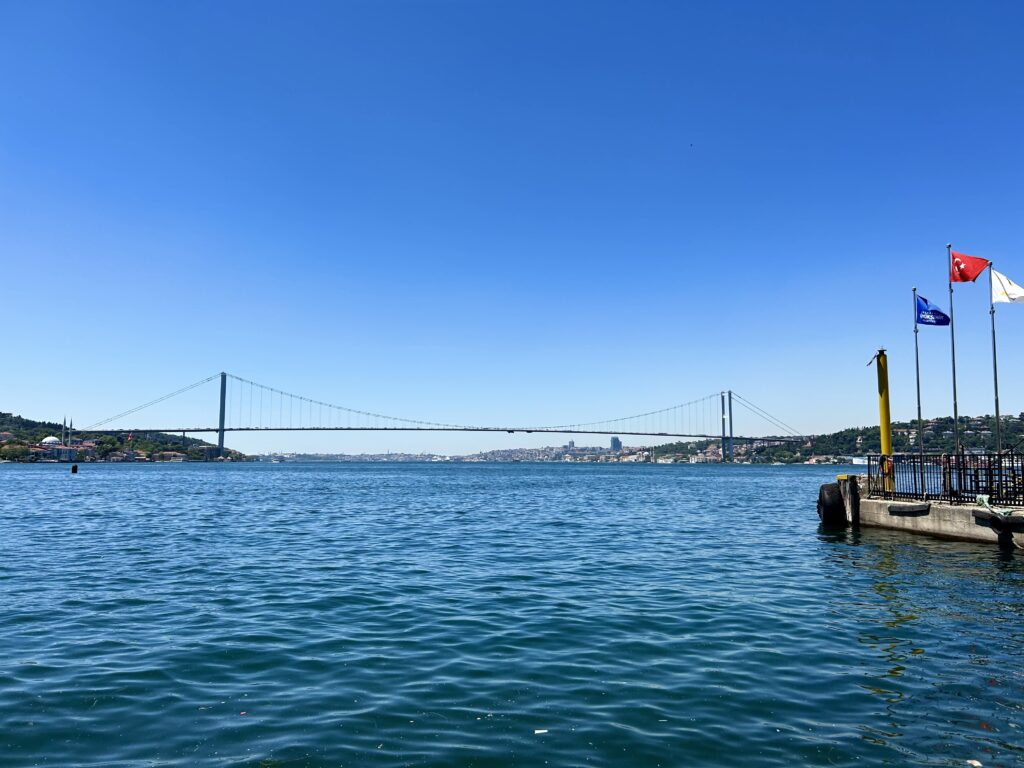
Like all the seaside districts to the north of Üsküdar (on the Asian coast) and Beşiktaş (on the European coast), Çengelköy was once a small village by the Bosphorus. Only ten or fifteen years ago, all these places were quiet locations for Istanbulites who wanted to avoid the hustle bustle of the city. Now, there seems to be no significant difference neither in terms of traffic nor crowds but, they still have a charm of their own. Çengelköy can be a good option for visitors of the Beylerbeyi Palace by the Bosphorus. (You can follow the link for more information about the palace.)
The name Çengelköy means Hook (çengel) Village (köy) in Turkish. Two possible explanations are offered for this name. The widely accepted version is based on the renowned Ottoman traveller and writer Evliya Çelebi (1611-1682) who claims that the district owes its name to a stash of Byzantine hooks and anchors that were found here after the Ottoman conquest of the city in 1453. According to the second explanation, the name might have come from the Ottoman Admiral Çengeloğlu Tahir Pasha who commissioned a waterside mosque here. (The suffix oğlu means son of, in this case meaning Son of Çengel, probably someone with the nickname.)
A palace was built here in the 6th century A.D. by Emperor Justinus II for his wife Sophia after whom the district was called Sophianae at the time. Later, in the 19th century a summer palace, the Hümayun Kasrı, was also built here. Neither of the structures remain today. The district has very beautiful Ottoman wooden yalı palaces by the Bosphorus that can best be seen from a boat, as they are hidden behind high walls on the street side.
Last but not least, Çengelköy is famous for the special cucumbers that are grown here. Known by the name of the district, these are fairly small, dark green-coloured and almost crisp cucumbers that are sought by Istanbulites as a traditional delicacy. If you decide not to have breakfast or a meal in Çengelköy, you can still taste these special cucumbers by buying a few from the district greengrocers. Çengelköy cucumbers do not need peeling but, washing should be a must. A nearby historical fountain is an option.
For many passersby the Chief Guard Ahmet Agha Fountain is yet another historical fountain of the Ottoman period among numerous across the city. However, though not very majestic, it is special in its own way. People rarely spare a few minutes to examine the monument. If they did, they would definitely notice the big cabbage made of marble which sits right on top of the fountain.
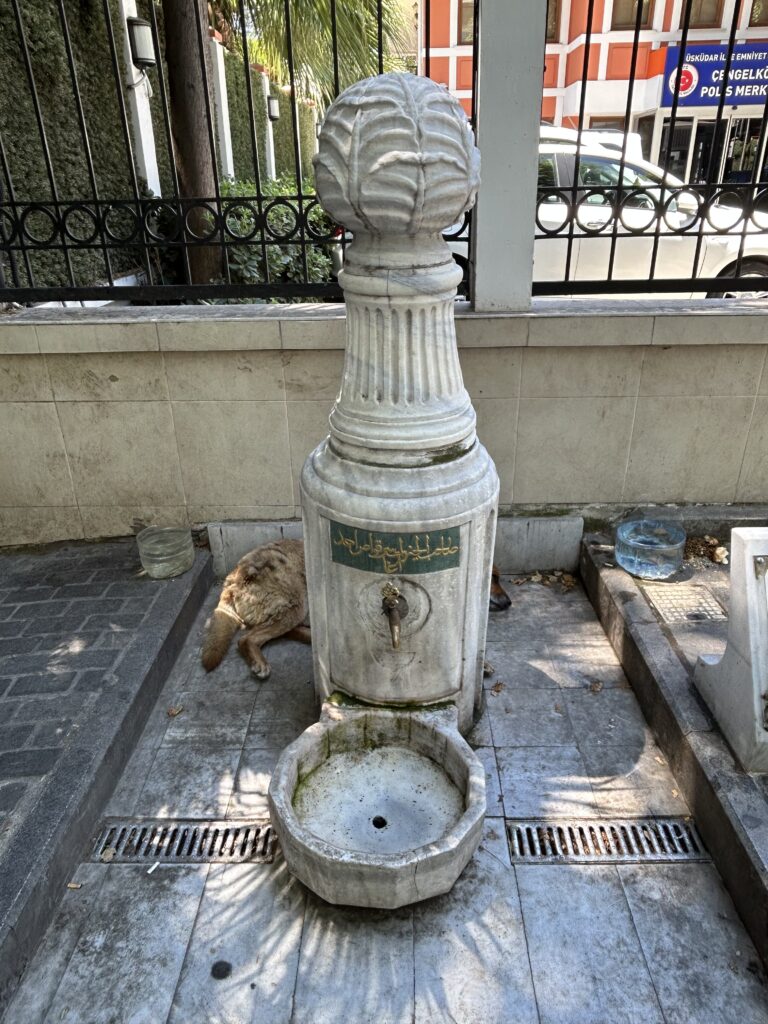
has a marble cabbage at the top
Although there are several similar fountains across the city, cabbage figures are not confined to such monuments. They can appear as a part of most unexpected structures such as mosque courtyards, newel caps of stairway banisters and even on top of tombstones. Similarly (though maybe less frequently) you can also encounter okra figures at several locations across the city. These are in fact symbols of a great sportive rivalry that lasted for centuries in Ottoman times. They were the emblems of two teams of jeered (cirit in Turkish), a traditional team sport that is played on horseback. Being a popular game among Turkic peoples of Central Asia, this equestrian game was brought to Anatolia as Turks migrated west in the 11th century. The aim of the game is to gain points by throwing and hitting the horsemen of the rival team with a wooden javelin.
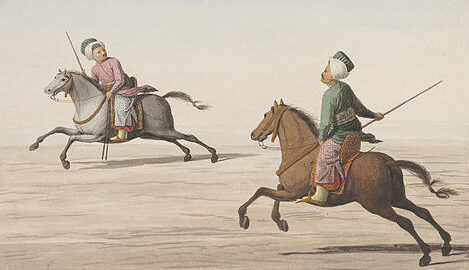
(Source: Akşam Newspaper, January 4th, 2017)
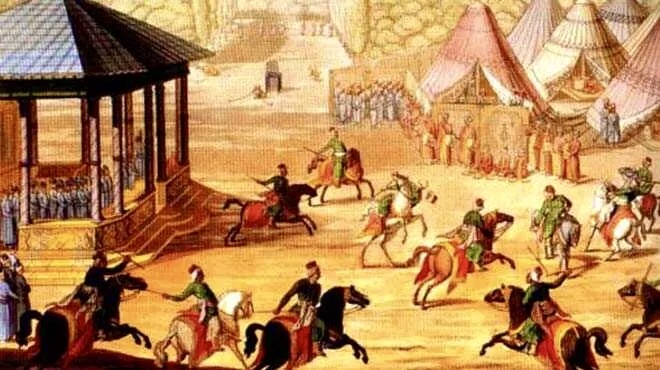
(Source: Akşam Newspaper, January 4th, 2017)
Different sources refer to different Sultans as the founders of the two renowned jeered teams which are the Cabbage Growers Team and the Okra Growers Team. Some state that it was Sultan Mehmet I (r. 1413-1421) while others attribute it to his grandson Mehmet II the Conqueror (1.r. 1444-1446, 2.r. 1451-1481). Either way, we can say that it goes back to the 15th century. The starting point of it all was to train elite cavalrymen by means of the jeered game. One of the teams was formed by horsemen from Merzifon, a city famous for its cabbages while the other one consisted of horsemen from Amasya, known for its okra. That is how the corresponding emblems of the two teams emerged. The Cabbage Growers Team wore uniforms in green while the Okra Growers Team preferred red ones. By the 16th century, these training exercises turned into serious war games. At the same time, they became extremely popular among all the subjects of the empire. Elites, Viziers, Pashas, government officials and ordinary people alike became fanatic supporters of the two teams. Even Sultans became loyal fans of different teams from time to time. Each match became a great occasion just like the great derbies of today. The games and the rivalry continued until June 16th 1826 when they were banned by Sultan Mahmut II (r.1808-1839) when he abolished the Janissary institution to establish a modern army.
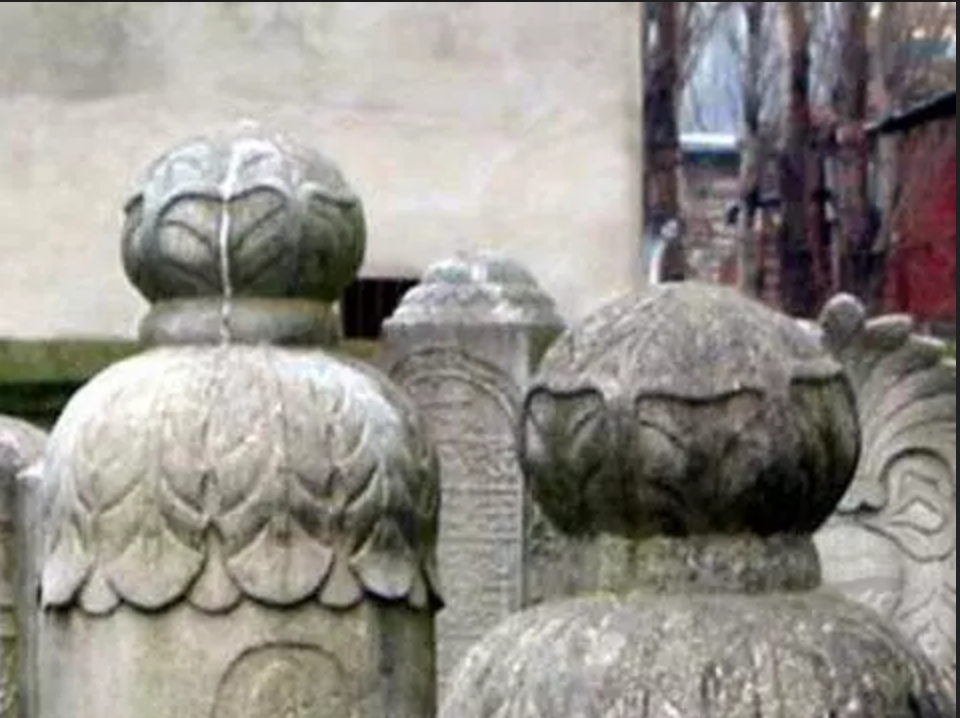
(Source: Akşam Newspaper, January 4th, 2017)
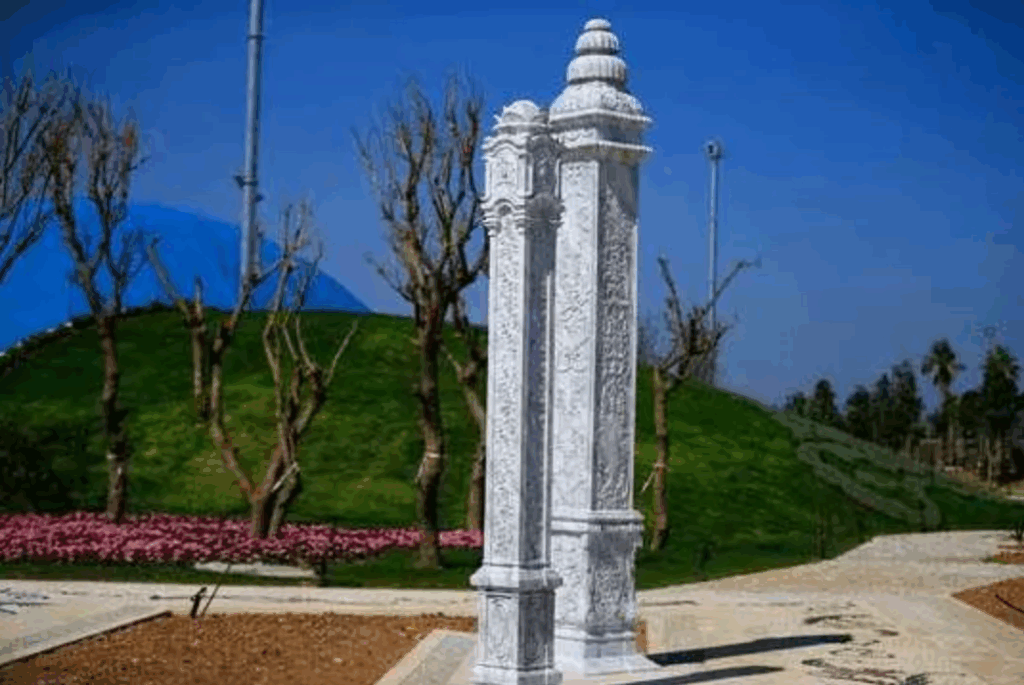
(Source: Akşam Newspaper, January 4th, 2017)
The fountain in Çengelköy (a.k.a. Cabbage Growers Fountain) is one of the numerous similar ones built in the 19th century. It was commissioned by Ahmet Agha, the Chief Guard of Koca Hüsrev Mehmet Pasha, one of the Grand Viziers of Sultan Abdülmecid (r.1839-1861). Next time you walk around Istanbul, look out for the cabbage and okra figures to commemorate the popular teams of jeered in Ottoman times.
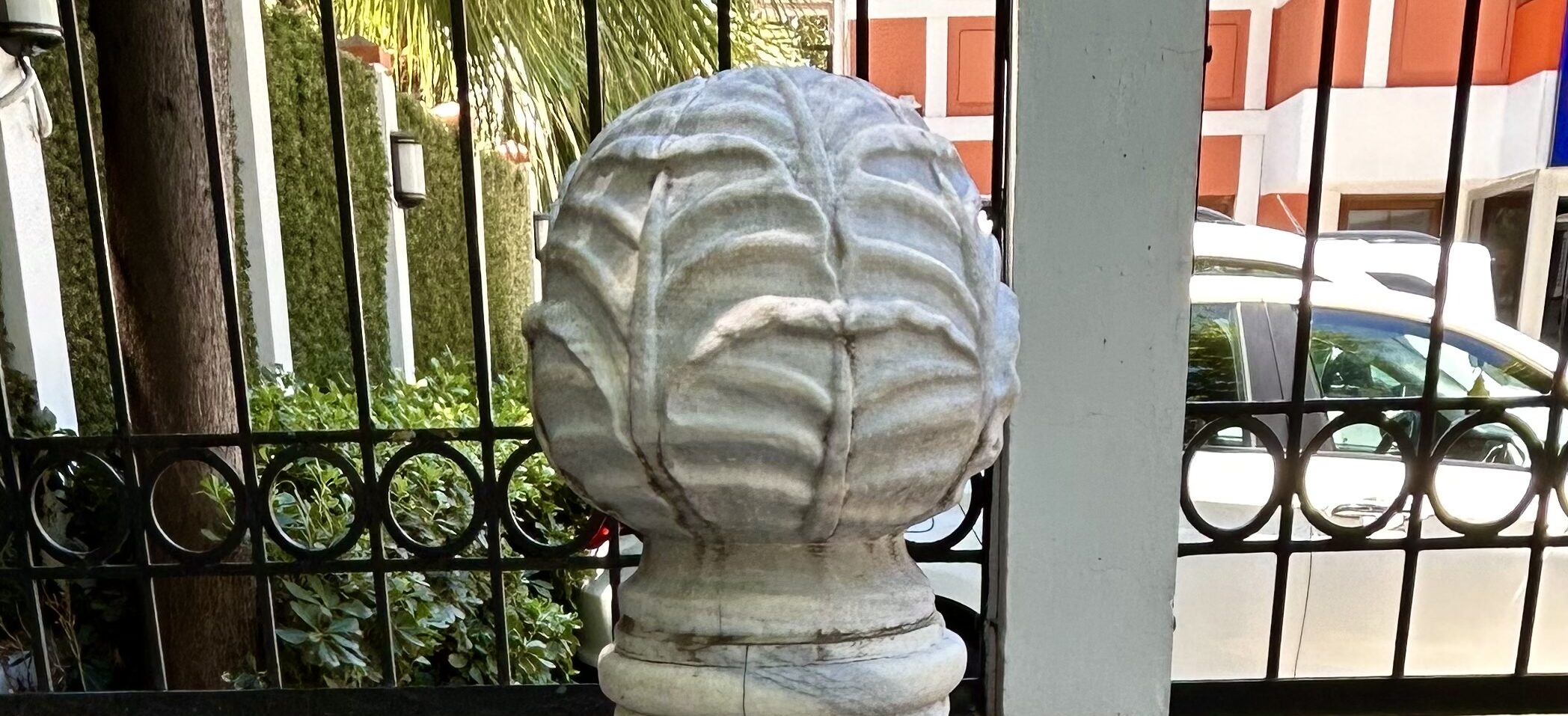
A magnificient document. Thank you
Thank you too! I am happy you enjoyed it.